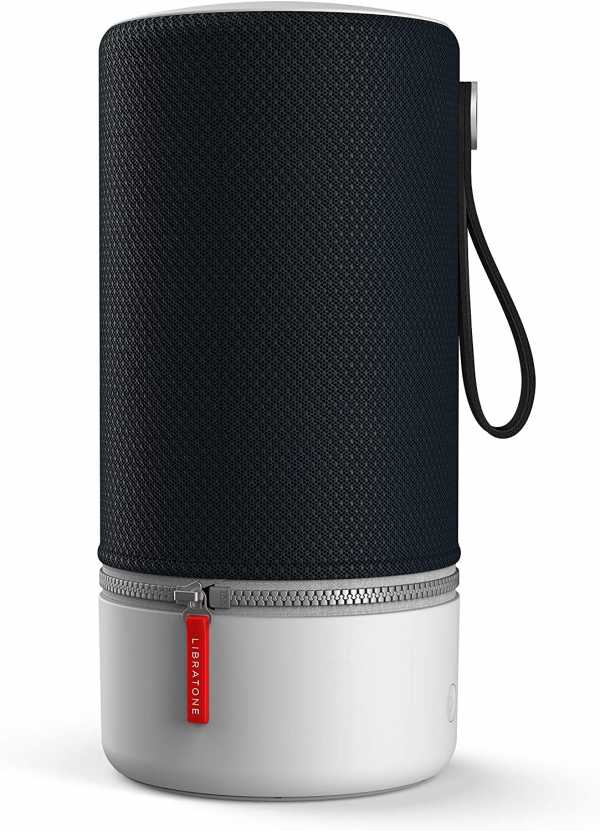Libratone
Transportable speaker Libratone Zipp 2: a backward evolution for sound
Aprox. 222€
See specificationsThree years after the launch of the Zipp, Libratone returns with the Zipp 2 (launch price € 299). As with the Zipp Mini 2, the Danish manufacturer promises us a more powerful sound, improved 360 ° sound rendering, a significant increase in autonomy as well as compatibility with Amazon Alexa. Promises kept?
Positive points
Deep bass, homogeneous 360 ° sound rendering.
Very nice power / size ratio.
Impeccable finish, design and construction.
Responsive and (even more) complete touch controls.
Wireless functionality more than exhaustive (Wi-Fi, Bluetooth, multiroom, Spotify Connect, webradios).
Bad points
Second part of the spectrum far behind, even with EQ.
Precision perfectible.
Only Alexa compatible (for now).
High latency, even in wired use.
Proprietary charger.
Our review
Ergonomics
For its third generation of Zipp speakers, Libratone applied the same recipe on both models. The evolution is very discreet since there is only the tactile disc and the coating of the upper surface which change.
For the rest, the Zipp 2 retains all the qualities of the previous edition: a serious construction with very beautiful finishes, its emblematic removable and washable fabric covering (available in 4 different colors), its strap to hang and transport it easily as well as a non-slip surface ensuring good stability. However, it should be noted that Libratone still does not announce any particular resistance regarding this model. Be sure to leave the enclosure at a good distance from water points and away from potential falls.
In appearance, the touch sensitive surface of the Zipp 2 does not seem to have changed much since the previous version. The faithful nightingale is always present in the center, surrounded by a light beam. This time, Amazon Alexa compatibility requires, the bird is now overhung by a microphone logo to request the intelligent voice assistant. The essential commands are directly accessible: volume management, music playback (a short press on the nightingale) and navigation between tracks (successive double or triple short press on the nightingale). Each press is accompanied by a specific light and sound indication. However, as we noticed on the Zipp Mini 2, this last manipulation requires good timing (especially in Bluetooth), and it does not run every time (especially in Wi-Fi).
A long press on the nightingale gives access to a brand new "advanced" menu and new tactile controls: finally! At 12 o'clock sharp, activation / deactivation of the microphone to communicate with the voice assistant; at 2 o'clock, the "Connection Mode" (pairing / visibility); at 4 o'clock, the acoustic correction; at 6 am, direct access to one of the five pre-recorded playlists (in the application); at 8 am, the multiroom association with another enclosure; and finally, at 10 am, the available updates. Each action is punctuated by a very intelligible voice indication, but only in English at the time of writing.
We take the same and start again with the wired connection. Next to the on / off button is the power connector for the supplied proprietary charger, an analog mini-jack input and a USB-A port to charge a device and play content (compatible with MP3 codecs, WAV, FLAC, WMA / ASF, OGG, AAC / M4A, AIFF and APE). As for wireless, Wi-Fi is still there (dual band 2.4 GHz and 5 GHz, DLNA Android / Windows) with Spotify Connect compatibility and now AirPlay 2, as well as Bluetooth 4.1 (no multipoint). There is, however, no way to switch between sources: the last connected has priority. If the manufacturer is to be believed, the autonomy of the Libratone Zipp 2 would have increased from 10 to 12 hours. The latter value can only be reached when the 40% listening volume is not exceeded. In which case, we stay around 10 hours of use.
The quality of capture offered by the on-board microphones has progressed well since the previous model (thanks to the integration of intelligent voice assistants). Even if we are at a very generous distance from the speaker (at the other end of a room or even in an adjacent room), the voice is still intelligible and the signal strong enough for our interlocutor to be able to understand us in telephone conversation .
Unfortunately, there is not so good on the latency side. In Bluetooth as in wired, one notes a particularly high delay (almost 320 ms in Bluetooth, and more than 125 ms in wired), which involves without surprise a very perceptible shift between sound and image. Even going through the 3.5 mm mini-jack input, you will have to deal with the latency.
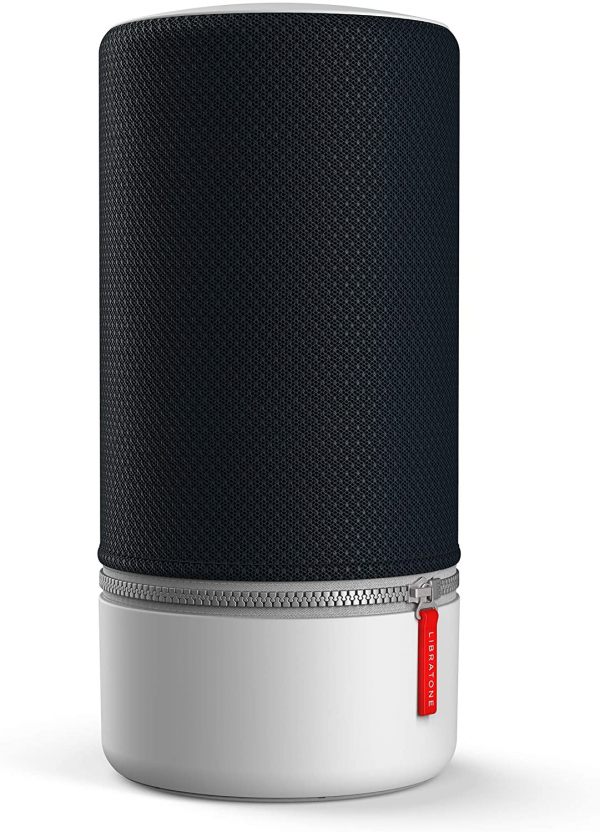
Multimedia
The Zipp 2 is multiroom, Wi-Fi or via Bluetooth. To integrate an enclosure into the Libratone ecosystem, the user can go through the application, or more simply through the dedicated icon on the touch disk. Indeed, once the first speaker connected via the application, the others only have to be manually connected to the network. Even older models (in this case, we tested it with a Zipp and a Zipp Mini 2015) can join (or leave) the party thanks to the dedicated touch control.
The application, also available in French now, is still as fluid, intuitive and complete. It gives access to many sound modes - depending on tastes (Neutral, Vocal, Book, Rock, Jazz, Film, etc.) and the positioning of the speaker (exterior, shelf, table, floor). It is also always possible to rename the speaker, start a timer, configure your favorite playlists (5, which can be accessed from the touch screen interface), view the remaining battery level or the signal strength. Wi-Fi, and even adjust the brightness of the LEDs. The speaker being AirPlay 2 compatible, note that it is also possible to configure its Wi-Fi access without even installing the application - in which case you will obviously not have access to the other functions mentioned.
The speaker groups can be configured in multi-mono or in stereo pairs. As soon as a group contains more than two speakers, monitoring switches to mono - it is not possible to assign the left channel to two speakers and the right channel to a third, for example, even less to create a multichannel set.
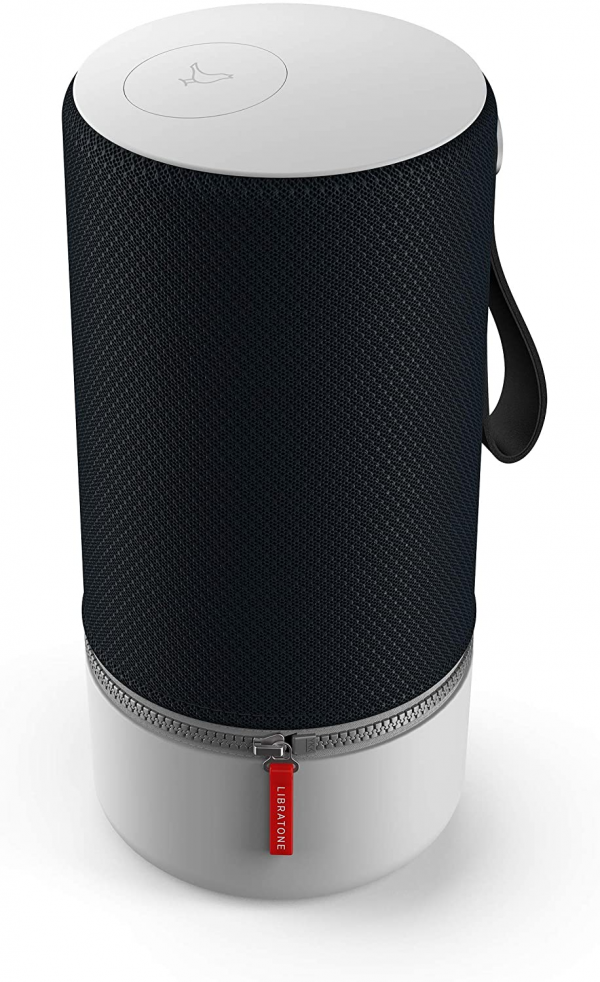
Speech Recognition
Just as the Zipp was one of the first transportable speakers to benefit from multiroom, the Zipp 2 is also a pioneer in the field of native integration of a nomadic voice assistant - or more precisely, an assistant.
During our tests, the three microphones used to pick up the famous sesame proved to be particularly effective, whether in reaction to "Alexa?" as for the rest of the festivities. The enclosure impressed us with its ability to perceive our injunctions at the other end of a (large) living room or in an adjacent room; with a voice severely diminished by tracheitis; or perfectly omnidirectionally - and even when you don't speak in your direction.
Unlike the Zipp Mini 2, it's a different story when the speaker emits sound content at the same time. Beyond 40% of the volume, it is impossible to invoke the assistant without having to speak very loudly and nearby. After passing 60% of the volume, it is simply impossible to trigger it.
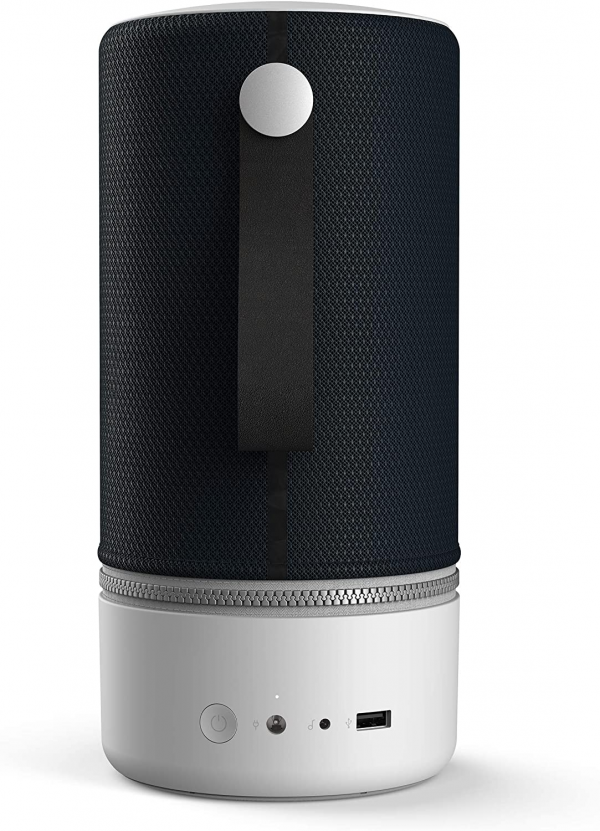
Audio
Libratone has judiciously chosen to keep the sound qualities of the Zipp Mini 1 by designing the Zipp Mini 2. We were therefore inclined to believe the same thing for the Zipp 2, but what was not our surprise when we started our first listening…
Indeed, the sound rendering offered by this Zipp 2 is much less balanced than that of the previous model. Listening to a second copy has indeed confirmed the significant difference there is with the Zipp of 2015. The very sharp decline in the second part of the spectrum highlights the bass and low mids. So we have a very warm, very round sound reproduction that lacks sharpness and presence. This strong trend applies to many elements such as voices, whose feeling of proximity is much more marked than usual. That said, it remains completely intelligible, whatever the circumstances. If you are not very fond of the hegemony of the bass and you want a more balanced sound rendering, we advise you to switch to the EQ mode "Jazz" coupled with the room correction "Table". This will also have the effect of calming the mask effect in this zone and the resonance located around 330 Hz (which roughly corresponds to the sharp and flat notes). The sound scene gains in readability, the sound "breathes" more.
The other EQ modes are not very interesting, because they accentuate the imbalance between the two halves of the spectrum. We can ultimately recommend the Speech mode which, as the name suggests so well, is relevant for listening to voice content (listening to the radio / podcast). During our test period and our many listenings in very different acoustic environments, the use of the new integrated "room correction" did not demonstrate its effectiveness. We did not notice any audible difference in the sound performance of the speaker.
Fortunately, the Zipp 2 retains many of the qualities of the Zipp 1. The different frequency bands are well defined, even if we would have liked more precision. The bass is very deep (especially if you take into account the size of the speaker), the feeling of sitting and impact are really there. They are quite dynamic. The 360 ° sound diffusion is very homogeneous, the orientation of the speaker with respect to the listening point is very unimportant (even if we note a bit more treble by positioning perfectly in front of the speaker). Finally, this model has a nice reserve of exploitable power, which allows to sound without any problem a living room of a good size or a small party in the garden, for example. The distortion is low over the entire audible spectrum.
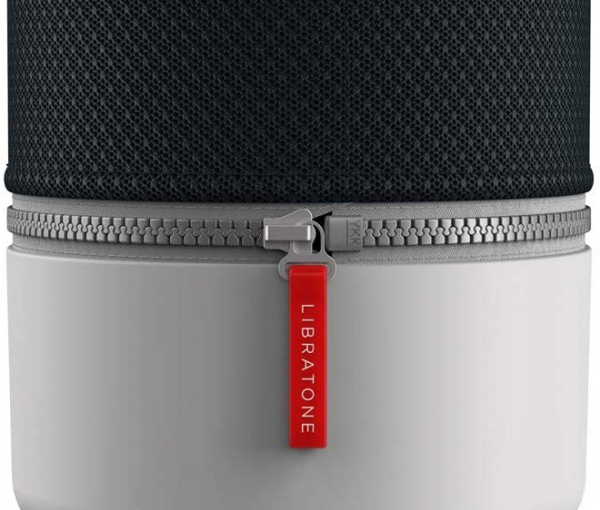
Conclusion
The Zipp 2 is a nice update of the Zipp 1 ergonomically: the controls are more complete and the speaker is clearly easier to use. We would really have liked this to be the case for the sound, whose performance dropped a notch on this second version, which cost him the ultimate star. The Zipp 2 is nonetheless a good transportable speaker that pulls out of the game thanks to many connected features, while positioning itself under the 300 € mark at its launch.
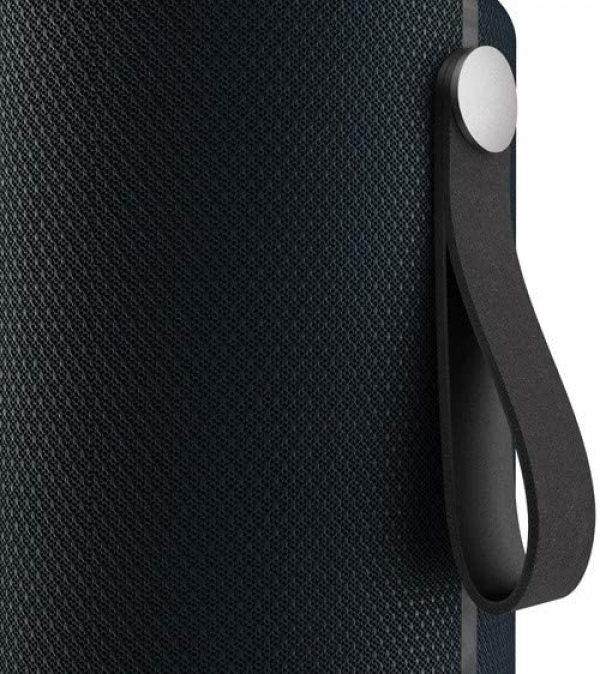
Specifications

